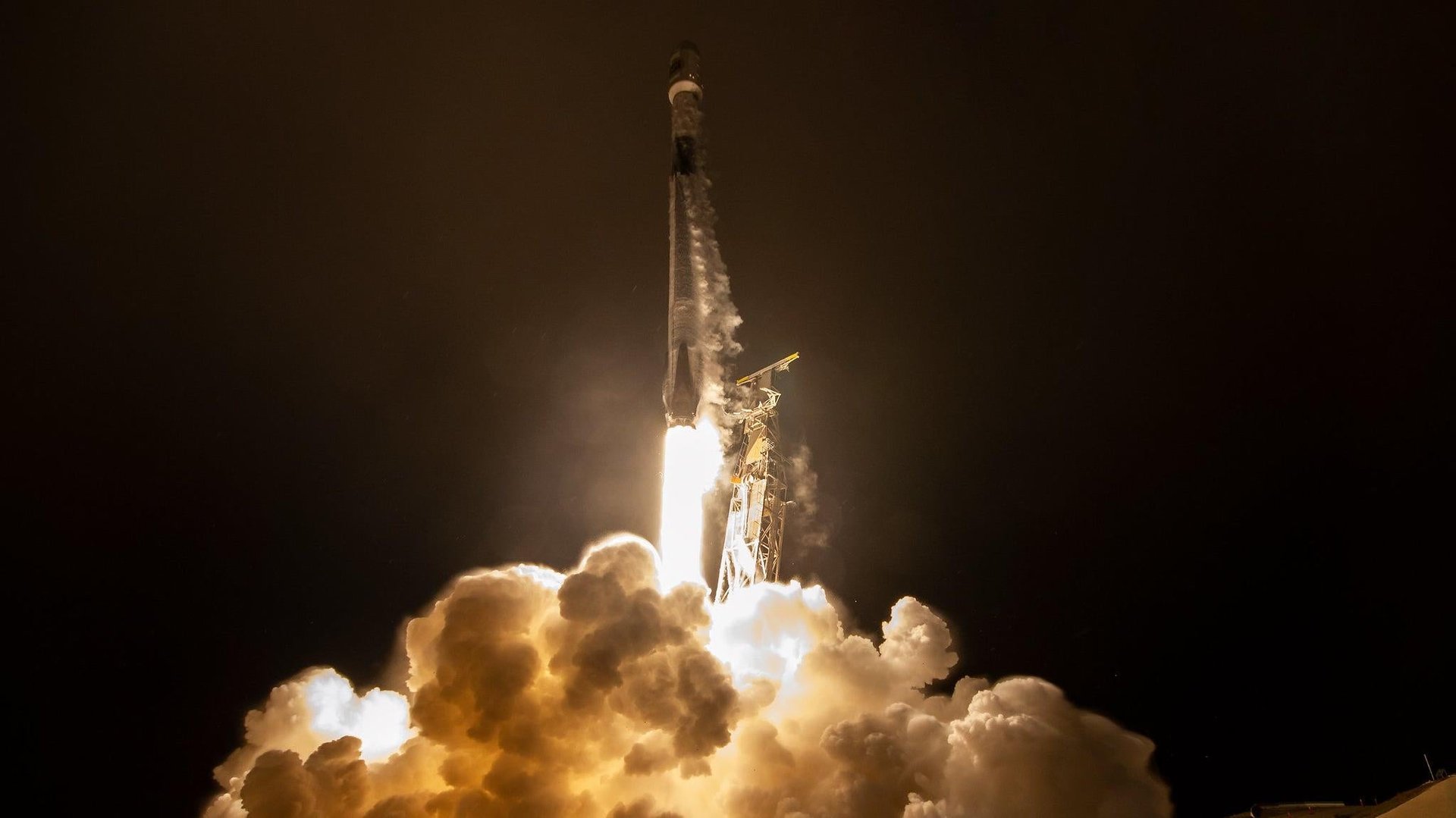Elon Musk's Twitter thinks rockets are "intimate media"
The space entrepreneur's biggest fans are being suspended from his social media platform.

Rockets are sexy, or at least some people think so. Take a look at this video of a SpaceX rocket returning to Earth after a launch yesterday:
Suggested Reading
If that didn’t get your heart racing, it certainly fired up the algorithms on Twitter. The video was automatically flagged as a violation of rules “against posting or sharing privately produced/distributed intimate media of someone without their express consent.” Spaceflight Now, a respected 23-year-old news site focused on the space program, was suspended from Twitter and contact with its nearly 500,000 followers unless it agreed to delete the offending tweet.
Related Content
Elon Musk, the founder of SpaceX and now the owner of Twitter, built his brand on the social media platform. SpaceX, with its laudable willingness to share imagery and test its vehicles out in the open, has generated a community of journalists, influencers and fans who tweet about those rockets. And now they keep getting tossed off the social media platform for doing it.
During the same launch, an account operated by space journalist Michael Baylor was suspended, as was an anonymous account focused on the activity at SpaceX’s Boca Chica, Texas, Starship test site. Late last year, during the launch of NASA’s Artemis 1 mission to the Moon, space photographer John Kraus was booted off Twitter with the same “intimate media” explanation after sharing a photo of the Moon rocket.
The perils of content moderation by machine
“Seems like our image recognition needs some work!” Musk tweeted in reply to complaints about the recent suspensions. After 24 hours, the accounts were unlocked again. Stephen Clark, the editor in chief of Spaceflight Now, told Quartz he received no further communication from Twitter about the decision to suspend or to reactivate his publication’s account.
Twitter, which declines to speak with reporters, is a bit of a black box these days. The users who have been suspended all appear to be caught in an automated content moderation system, unlike other controversial suspensions that seem specifically targeted. The algorithmic issue likely predates Musk; in November, the BBC reported on an astronomer whose picture of a meteoroid was flagged as an “intimate media” violation months before the SpaceX CEO took over the social media site. Still, Twitter’s targeting of space content has increased in recent months and prompted confusion in the space community.
One explanation may be the firings and resignations of thousands of Twitter employees whose jobs involved content moderation, and who might have responded more quickly to appeals that photos of rockets and astronomical phenomena in public airspace don’t violate any rules.
A former Twitter employee who worked on the company’s content moderation systems told Quartz that machine learning tools can misidentify images; pictures with lots of flesh-toned pixels, for example, trigger pornography detectors, so people sharing pictures of their pedicures might be accidentally set them off, too. “You can imagine how a rocket might be misidentified,” the former employee said, and added that these models have adjustable precision thresholds before they mark content as sensitive. A given algorithm might need to be 95% confident that a post is against the rules before it locks an account.
“If Twitter wanted to decrease reliance on human moderators while not resulting in a flood of sensitive content, an obvious way to do that is lowering the precision thresholds of machine learning models responsible for detecting sensitive content,” the former employee explained. “The downside of doing so is an increase in the rate of errors—in essence, more incorrect censorship.”
The outer-space-intimate-content snag gets at the challenges Musk faces as Twitter relies more heavily on machine learning to replace humans at the much leaner company. If Twitter’s software can’t tell the difference between a 70 meter tall vehicle flying through the air and intimate content, how will it recognize abusive behavior or hateful content?
